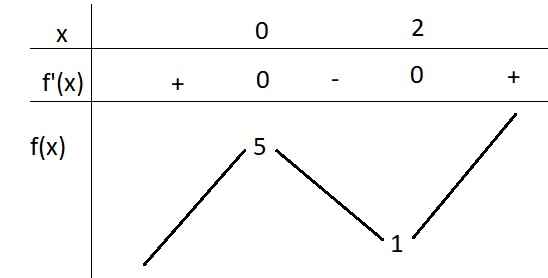
Hãy nhập câu hỏi của bạn vào đây, nếu là tài khoản VIP, bạn sẽ được ưu tiên trả lời.


Lời giải:
Đặt \(3^x=a\). PT ban đầu trở thành:
\(a^2-6a+m=0(*)\).
Để PT ban đầu có 2 nghiệm thực thì $(*)$ phải có 2 nghiệm $a_1,a_2$ dương.
\(\Leftrightarrow \left\{\begin{matrix} \Delta'=9-m>0\\ a_1+a_2=6>0\\ a_1a_2=m>0\end{matrix}\right.\Leftrightarrow 0< m< 9(I)\)
Ta có: \(a_1a_2=m\)
\(\Leftrightarrow 3^{x_1}.3^{x_2}=m\Leftrightarrow 3^{x_1+x_2}=m\)
Để \(x_1+x_2=1\) thì $m=3$ (hoàn toàn thỏa mãn $(I)$)
Vậy $m=3$

Bài 1:
Đặt \(\left(\frac{3}{2}\right)^x=a\) \((a>0)\)
PT tương đương với:
\(\left(\frac{9}{4}\right)^x-2.\left(\frac{3}{2}\right)^x+m^2=0\)
\(\Leftrightarrow a^2-2a+m^2=0\) (1)
-Trước tiên, để pt đầu tiên có hai nghiệm phân biệt thì (1) cũng phải có hai nghiệm phân biệt \(\rightarrow \) \(\Delta'=1-m^2>0\Leftrightarrow -1< m< 1\)
Áp dụng hệ thức Viete với \(a_1,a_2\) là nghiệm của (1) \(\left\{\begin{matrix} a_1+a_2=2\\ a_1a_2=m^2\end{matrix}\right.\)
-Vì \(a\) luôn dương nên \(\left\{\begin{matrix} a_1+a_2>0\\ a_1a_2>0\end{matrix}\right.\Leftrightarrow m^2>0 \Leftrightarrow m\neq 0\)
-Xét đk cuối cùng, để pt đầu tiên có hai nghiệm trái dấu, tức \(x<0\) hoặc $x>0$ thì \(a<1\) hoặc \(a>1\), hay \((a_1-1)(a_2-1)< 0\)
\(\Leftrightarrow a_1a_2-(a_1+a_2)+1< 0\Leftrightarrow m^2<1\Leftrightarrow -1< m< 1\)
Vậy \(-1< m< 1; m\neq 0\)
Bài 2:
Đặt \(2^x=a\Rightarrow \) \(4^x-2m.2^x+2m=0\) tương đương với:
\(a^2-2ma+2m=0\) (1)
Để pt đầu tiên có hai nghiệm phân biệt thì (1) cũng phải có hai nghiệm phân biệt
\(\Rightarrow \Delta'=m^2-2m>0\Leftrightarrow m< 0\) hoặc $m>2$
Áp dugnj hệ thức viete với $a_1,a_2$ là hai nghiệm của phương trình:
\(a_1a_2=2m\Leftrightarrow 2^{x_1}.2^{x_2}=2m\Leftrightarrow 2^{x_1+x_2}=2m\Leftrightarrow 8=2m\rightarrow m=4\)
(thỏa mãn)
Vậy \(m=4\)

a/ \(log_2\left(2+a\right)=3\Rightarrow2+a=8\Rightarrow a=6\)
b/ Đặt \(\left(2+\sqrt{3}\right)^x=t>0\)
\(\Rightarrow t^2+t=6\Leftrightarrow t^2+t-6=0\Rightarrow\left[{}\begin{matrix}t=-3\left(l\right)\\t=2\end{matrix}\right.\)
\(\Rightarrow\left(2+\sqrt{3}\right)^x=2\Rightarrow x=log_{2+\sqrt{3}}2\)
c/ Đặt \(2^x=t>0\)
\(t^2-5t+4=0\Rightarrow\left[{}\begin{matrix}t=1\\t=4\end{matrix}\right.\) \(\Rightarrow\left[{}\begin{matrix}2^x=1\\2^x=4\end{matrix}\right.\) \(\Rightarrow\left[{}\begin{matrix}x=0\\x=2\end{matrix}\right.\)

Đặt \(3^x=t>0\Rightarrow t^2-2\left(7-x\right)t+45-18x=0\)
\(\Delta'=\left(7-x\right)^2-\left(45-18x\right)=\left(x+2\right)^2\)
\(\Rightarrow\left[{}\begin{matrix}t=7-x+x+2=9\\t=7-x-\left(x+2\right)=5-2x\end{matrix}\right.\)
\(\Rightarrow\left[{}\begin{matrix}3^x=9\Rightarrow x=2\\3^x=5-2x\left(1\right)\end{matrix}\right.\)
Xét (1) \(\Leftrightarrow3^x+2x-5=0\)
Nhận thấy \(x=1\) là 1 nghiệm của (1)
Xét hàm \(f\left(x\right)=3^x+2x-5\Rightarrow f'\left(x\right)=3^x.ln3+2>0;\forall x\)
\(\Rightarrow f\left(x\right)\) đồng biến trên R nên \(f\left(x\right)\) có tối đa 1 nghiệm
\(\Rightarrow x=1\) là nghiệm duy nhất của (1)
Vậy pt đã cho có 2 nghiệm thực \(x=\left\{1;2\right\}\)

\(\Leftrightarrow\left\{{}\begin{matrix}3.2^xlogx-12logx-2^x+4=0\left(1\right)\\5^x=m\left(2\right)\end{matrix}\right.\) và \(5^x\ge m\) (\(x>0\))
Xét (1):
\(\Leftrightarrow3logx\left(2^x-4\right)-\left(2^x-4\right)=0\)
\(\Leftrightarrow\left(3logx-1\right)\left(2^x-4\right)=0\)
\(\Rightarrow\left[{}\begin{matrix}x_1=2\\x_2=\sqrt[3]{10}\end{matrix}\right.\)
\(y=5^x\) đồng biến trên R nên (2) có tối đa 1 nghiệm
Để pt đã cho có đúng 2 nghiệm phân biệt ta có các TH sau:
TH1: (2) vô nghiệm \(\Rightarrow m\le0\) (ko có số nguyên dương nào)
TH2: (2) có nghiệm (khác với 2 nghiệm của (1)), đồng thời giá trị của m khiến cho đúng 1 nghiệm của (1) nằm ngoài miền xác định
(2) có nghiệm \(\Rightarrow m>0\Rightarrow x_3=log_5m\)
Do \(\sqrt[3]{10}>2\) nên bài toán thỏa mãn khi: \(x_1< x_3< x_2\)
\(\Rightarrow2< log_5m< \sqrt[3]{10}\)
\(\Rightarrow25< m< 5^{\sqrt[3]{10}}\) (hơn 32 chút xíu)
\(\Rightarrow\) \(32-26+1\) giá trị nguyên


\(\Leftrightarrow x^3-3x^2+5=m\)
Xét hàm \(f\left(x\right)=x^3-3x^2+5\)
\(f'\left(x\right)=3x^2-6x=0\Rightarrow\left[{}\begin{matrix}x=0\\x=2\end{matrix}\right.\)
BBT:

Từ BBT ta thấy \(y=m\) cắt \(y=f\left(x\right)\) tại 3 điểm khi \(1< m< 5\)

14.
\(log_aa^2b^4=log_aa^2+log_ab^4=2+4log_ab=2+4p\)
15.
\(\frac{1}{2}log_ab+\frac{1}{2}log_ba=1\)
\(\Leftrightarrow log_ab+\frac{1}{log_ab}=2\)
\(\Leftrightarrow log_a^2b-2log_ab+1=0\)
\(\Leftrightarrow\left(log_ab-1\right)^2=0\)
\(\Rightarrow log_ab=1\Rightarrow a=b\)
16.
\(2^a=3\Rightarrow log_32^a=1\Rightarrow log_32=\frac{1}{a}\)
\(log_3\sqrt[3]{16}=log_32^{\frac{4}{3}}=\frac{4}{3}log_32=\frac{4}{3a}\)
11.
\(\Leftrightarrow1>\left(2+\sqrt{3}\right)^x\left(2+\sqrt{3}\right)^{x+2}\)
\(\Leftrightarrow\left(2+\sqrt{3}\right)^{2x+2}< 1\)
\(\Leftrightarrow2x+2< 0\Rightarrow x< -1\)
\(\Rightarrow\) có \(-2+2020+1=2019\) nghiệm
12.
\(\Leftrightarrow\left\{{}\begin{matrix}x-2>0\\0< log_3\left(x-2\right)< 1\end{matrix}\right.\)
\(\Leftrightarrow\left\{{}\begin{matrix}x>2\\1< x-2< 3\end{matrix}\right.\)
\(\Rightarrow3< x< 5\Rightarrow b-a=2\)
13.
\(4^x=t>0\Rightarrow t^2-5t+4\ge0\)
\(\Rightarrow\left[{}\begin{matrix}t\le1\\t\ge4\end{matrix}\right.\) \(\Rightarrow\left[{}\begin{matrix}4^x\le1\\4^x\ge4\end{matrix}\right.\)
\(\Rightarrow\left[{}\begin{matrix}x\le0\\x\ge1\end{matrix}\right.\)
\(3^{2x}+2.3^x-3=0\)
Đặt \(^{3^x=t}\) (t>0)
=) \(t^2+2t-3=0\)
=) \(\left[{}\begin{matrix}t=1\\t=-3\left(ktm\right)\end{matrix}\right.\)
Với t=1 =) x=0